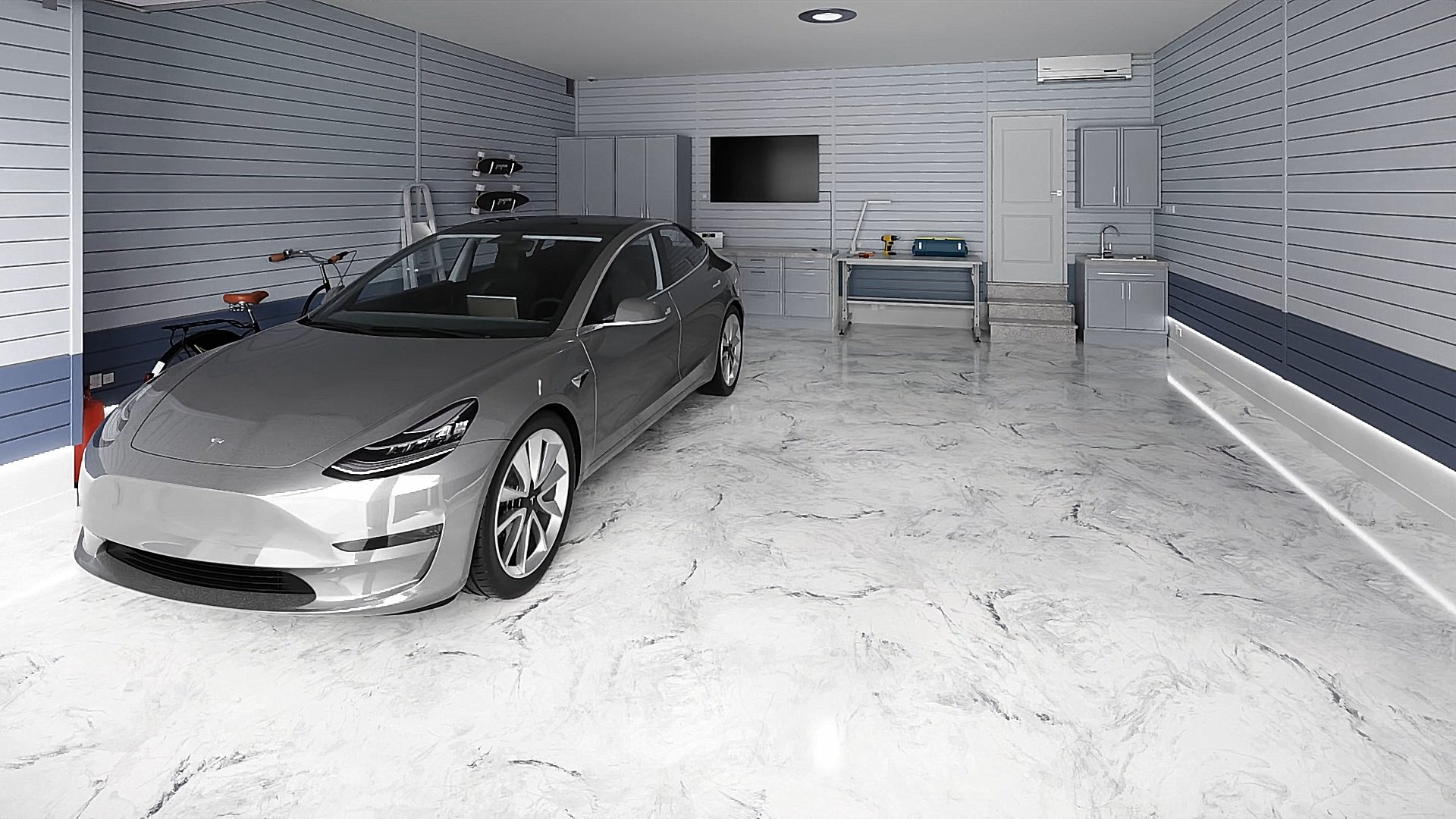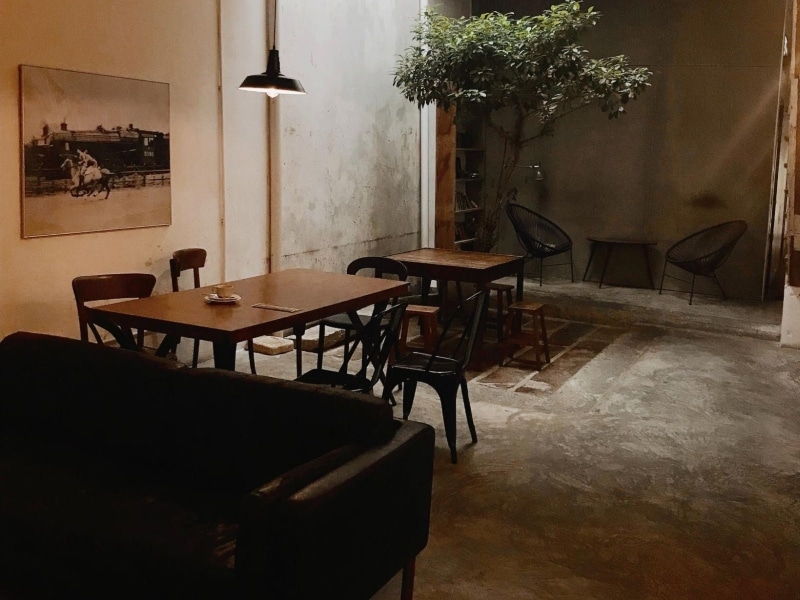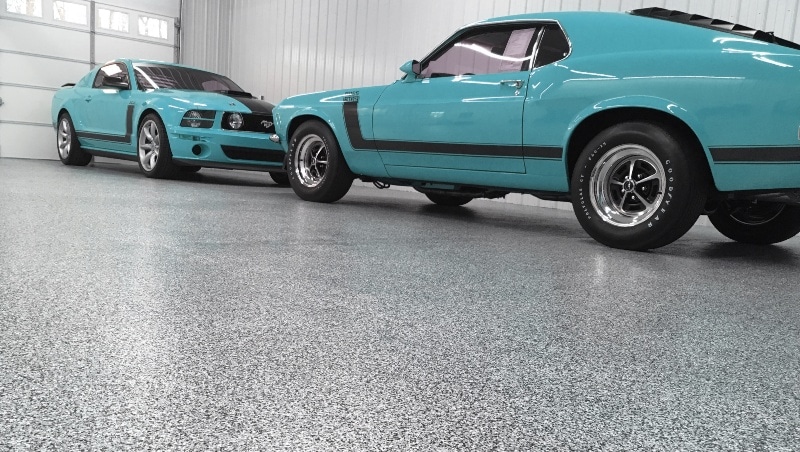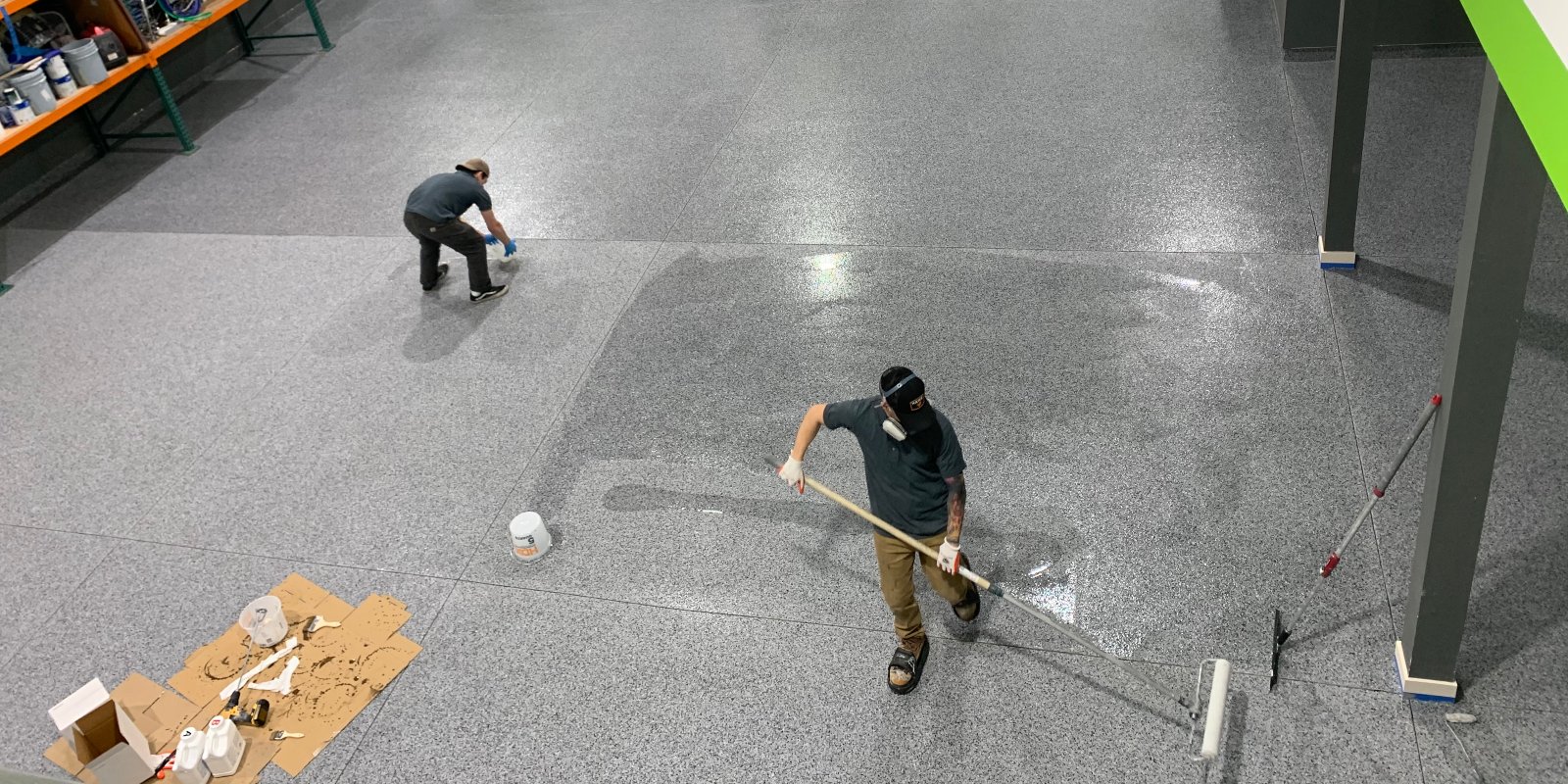The Benefits of Epoxy Floor: Why It’s the Perfect Solution for High-Traffic Areas
Epoxy flooring is renowned for its durability and versatility, but why is it specifically suited for high-traffic areas? In this comprehensive guide, we’re going to explore how epoxy flooring outpaces traditional flooring options in crowded spaces, providing a long list of advantages that extend well beyond mere aesthetics.
It doesn’t matter if it’s a busy factory floor or a bustling retail shop; high-traffic areas are places of continuous interaction and movement. They demand a flooring solution that can withstand the test of time, provide safety, and look good while doing it. Epoxy floor ticks all of these boxes and more. Let’s dive into why epoxy is the go-to choice for the most demanding environments.
What is Epoxy Flooring?
Epoxy flooring is a versatile surface coating made up of a precise mixture of resin and hardener. The chemical reaction between these components results in a durable plastic material that boasts exceptional strength and resilience against wear and tear. Its strong adhesion to various base layers ensures a lasting bond.
One of the key features of epoxy flooring is its seamless finish, which not only imparts a sophisticated and polished appearance but also eradicates the presence of cracks and crevices where dust and bacteria could collect. This seamless quality contributes significantly to the hygiene of the space, making it ideal for environments that demand cleanliness, longevity, and a touch of elegance.

The Benefits of Epoxy Flooring
Now that we have a general understanding of what epoxy flooring is, let’s delve into its specific benefits in high-traffic areas.
- Durability: Epoxy flooring is incredibly hard-wearing, and it’s impervious to heavy machinery, foot traffic, and abrasions. It’s also resistant to moisture penetration, chemical spills, and extreme temperatures, making it suitable for harsh environments like warehouses or food processing plants.
- Easy Maintenance: Because of its seamless design, there are no crevices or joints in epoxy flooring where dirt, grime, and bacteria can accumulate. This makes it incredibly easy to clean with just a simple mop and mild cleaning solution. With minimal maintenance requirements, epoxy flooring is the ideal choice for busy high-traffic areas.
- Safety: Epoxy flooring can be customized with anti-slip agents to provide an extra layer of safety in areas where slipping is a concern. This feature makes it an excellent choice for places like restaurant kitchens or loading docks, where spills and moisture are common.
- Versatility: Epoxy flooring can be tailored to suit different environments, from industrial settings to retail spaces. It’s available in various colors, patterns, and finishes, allowing you to create a custom look to enhance your facility’s aesthetic appeal.
- Cost-Effective: Investing in epoxy flooring is a wise decision for high-traffic areas as it’s incredibly durable and long-lasting, reducing the need for frequent repairs or replacements. This makes it a cost-effective option in the long run, saving both time and money.
In conclusion, epoxy flooring offers a multitude of benefits that make it the perfect solution for high-traffic areas. Its durability, easy maintenance, safety features, versatility, and cost-effectiveness all contribute to its popularity in a wide range of industries.
Where Can Epoxy Flooring be Used?
Epoxy flooring’s robust nature makes it suitable for a diverse range of settings, each with its own unique demands.
- Industrial Settings: Industrial spaces, such as manufacturing plants, warehouse floors, and garage floors are subject to a significant amount of stress due to heavy machinery and equipment. Epoxy flooring stands up to this challenge, providing a surface that resists wear, withstands heavy loads, and discourages the accumulation of contaminants, thereby maintaining a clean and safe work environment.
- Commercial Spaces: Commercial venues like shopping malls, hospitals, and schools benefit immensely from epoxy flooring’s easy-to-clean surface and aesthetic versatility. It stands up to the heavy foot traffic of daily business operations and supports hygiene protocols, especially in healthcare settings. Plus, the customizable designs add a professional and polished look that can reinforce branding.
- Residential Spaces: Epoxy flooring is a practical and stylish option for homes, especially in basements, garages, and kitchens where durability and ease of cleaning are priorities. It can resist spills, stains, and the hustle and bustle of family life. With an array of customizable options, homeowners can create a high-end appearance without sacrificing functionality.
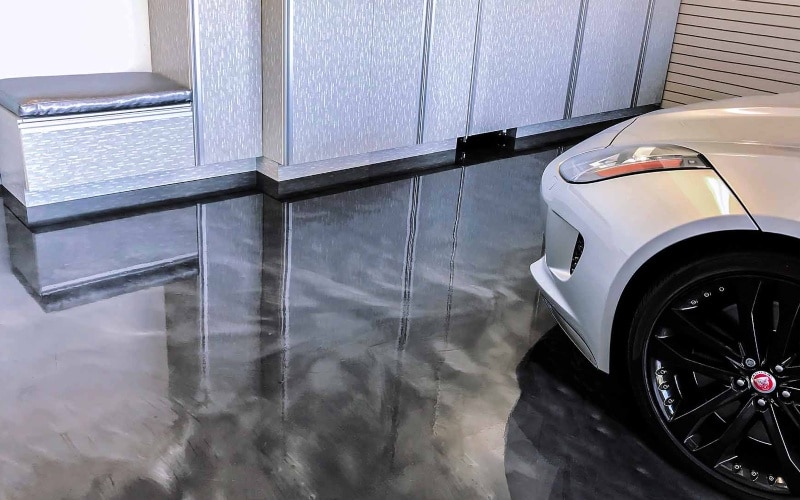
Types of Epoxy Flooring
When discussing the types of epoxy flooring, it’s essential to understand that customization options are nearly endless, but there are a few common categories that stand out for their specific applications and properties.
- Self-Leveling Epoxy: This type is ideal for creating a smooth and level texture over new or old concrete floors. It comes in a variety of colors and is perfect for commercial, industrial, and residential areas that need a durable and seamless surface.
- Mortar Epoxy: Known as the strongest of all epoxy floors, mortar systems are used in heavy industrial settings. They can repair cracks before laying another type of epoxy floor and are great for spaces that demand a surface capable of holding up to significant stress and impacts.
- Quartz-Filled Epoxy: Combining high-performance epoxy polymer resin and stained quartz grains, this floor system is used where aesthetics and slip resistance are important. It’s a common choice for locker rooms, restrooms, schools, and cafeterias.
- Anti-Static Epoxy (Electrostatic Charge Resistant Floors): In environments where static-sensitive electronic components are handled, such as electronics manufacturing or hospitals, this flooring option is vital for reducing static hazards.
- Epoxy Flake Floors: Flake floor systems provide a vibrant look by incorporating colored flake materials within the epoxy. It offers a terrazzo-like appearance but is more affordable and provides slip resistance.
With each type of epoxy flooring comes a set of unique features intended for specific use-cases, whether it’s prioritizing hygiene, durability, aesthetics, or anti-static properties. The right choice will depend largely on the demands of the space where it’s to be installed.
How to Install Epoxy Flooring
Installing epoxy flooring is a multi-step process that requires meticulous preparation and precision. Below is an overview of the general steps involved:
- Preparation of the Floor: Before installing epoxy flooring, the concrete surface must be properly prepared. This involves thoroughly cleaning the floor, repairing any cracks or damage, and ensuring the surface is level. Any grease or oil stains need to be removed, and previous coatings or sealants must be stripped.
- Priming the Surface: Once the substrate is ready, a primer is applied to enhance the adhesion of the epoxy. This step is crucial for preventing future peeling or chipping of the epoxy layer.
- Mixing the Epoxy Resin: The next step involves accurately mixing the epoxy resin with its hardening agent. It’s vital to follow the manufacturer’s instructions precisely for the correct ratio and mixing time to ensure optimal performance of the final product.
- Applying the Epoxy Coating: The mixed epoxy is then applied to the primer-coated surface, starting at one corner and working systematically across the floor. Applicators must wear the appropriate personal protective equipment (PPE) and maintain a wet edge to avoid lines or creases in the finish.
- Applying the Top Coat (if necessary): Some epoxy flooring systems may require a topcoat for extra protection and aesthetics. If this is the case, it is applied after the epoxy layer has sufficiently cured according to the manufacturer’s directions.
- Curing Time: Adequate curing time is essential for the durability and strength of the epoxy flooring. Generally, the floor should not be used for light traffic for at least 24 hours after application, and a full cure may take up to seven days.
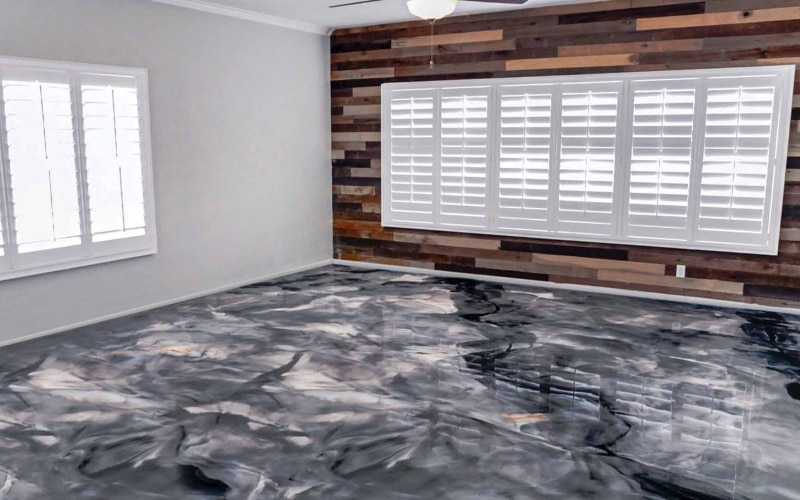
Professional installation is recommended to achieve the best results and longevity for your epoxy flooring. However, for those experienced with DIY projects, following the detailed instructions provided with the product i s essential. Always consult the product’s technical data sheet for specific guidance regarding the installation process.
In conclusion, epoxy flooring is a versatile and durable option that can suit a variety of spaces, from industrial to residential. With its easy maintenance, customizable designs, and unique properties for different applications, it’s no wonder epoxy floors are becoming increasingly popular in both commercial and residential settings. Whether looking to upgrade the aesthetics or functionality of a space, consider the many benefits of epoxy flooring for your next project. So, go ahead and explore the endless possibilities of epoxy flooring for your home or business!
https://www.google.com/maps?cid=2589512530409833629




